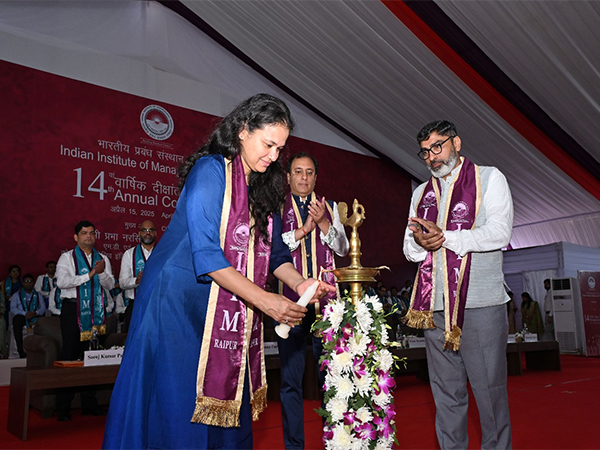"We have roadmap, will have a launch soon": P Veeramuthuvel on India's Gaganyaan mission
Oct 08, 2023

Tiruchirappalli (Tamil Nadu) [India], October 8 : After the successful mission of Chandrayaan-3 and Aditya L1, India is now looking at human exploration in space. Chandrayaan-3 Project director, P Veeramuthuvel while speaking on the Gaganyaan mission, said that a roadmap is there and the launch will be soon.
Speaking at an event, Veeramuthuvel said, "Soft landing in itself is a technology. India is the fourth country to have that. We mastered that. Then only human exploration is possible. You know a Gaganyaan program is coming up. It's a human exploration program. We have the roadmap and we will have the launch soon."
Meanwhile, The Indian Space Research Organisation (ISRO) has started preparations for unmanned flight tests as part of the Gaganyaan mission, the agency said on Saturday.
A post on the ISRO's official handle on social media platform X read, "Mission Gaganyaan: ISRO to commence unmanned flight tests for the Gaganyaan mission. Preparations for the Flight Test Vehicle Abort Mission-1 (TV-D1), which demonstrates the performance of the Crew Escape System, are underway."
According to ISRO, the success of this test flight will set the stage for the remaining qualification tests and unmanned missions, leading to the first Gaganyaan mission with Indian Astronauts.
The agency in a release regarding the First Crew Module for the Gaganyaan test flight said that the first development flight Test Vehicle (TV-D1) is in the final stages of preparation.
While the rocket itself will be constructed elsewhere, all internal systems for Gaganyaan will be developed in Ahmedabad.
ISRO's Ahmedabad facility will be responsible for building two critical systems for the Gaganyaan mission- the cabin systems and communication systems.
The cabin will house three seats for astronauts, along with a lighting system and two display screens to monitor various parameters inside the cabin.
Gaganyaan represents India's first manned space mission, and it aims to send three astronauts into an orbit of 400 kilometres above the Earth's surface.

















